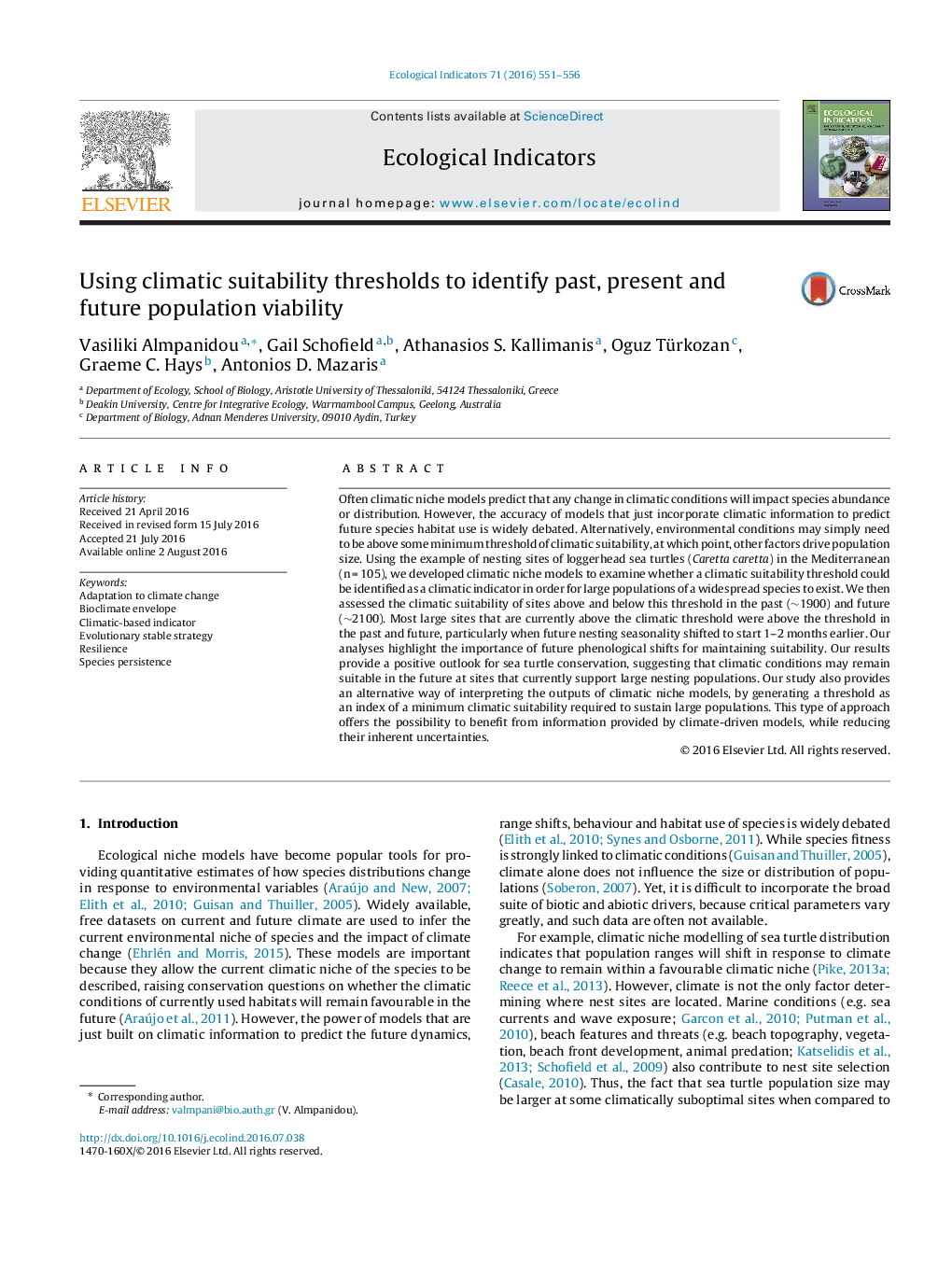| Article ID | Journal | Published Year | Pages | File Type |
|---|---|---|---|---|
| 6293006 | Ecological Indicators | 2016 | 6 Pages |
â¢We used climatic niche models to generate thresholds of climatic suitability.â¢The minimum threshold of climatic suitability for sea turtle nesting sites was set.â¢Most large populations fell above this threshold in the past, present and future.â¢Future phenological shifts will help maintain climatic suitability of these sites.â¢The threshold approach could reduce uncertainty in climatic niche models.
Often climatic niche models predict that any change in climatic conditions will impact species abundance or distribution. However, the accuracy of models that just incorporate climatic information to predict future species habitat use is widely debated. Alternatively, environmental conditions may simply need to be above some minimum threshold of climatic suitability, at which point, other factors drive population size. Using the example of nesting sites of loggerhead sea turtles (Caretta caretta) in the Mediterranean (n = 105), we developed climatic niche models to examine whether a climatic suitability threshold could be identified as a climatic indicator in order for large populations of a widespread species to exist. We then assessed the climatic suitability of sites above and below this threshold in the past (â¼1900) and future (â¼2100). Most large sites that are currently above the climatic threshold were above the threshold in the past and future, particularly when future nesting seasonality shifted to start 1-2 months earlier. Our analyses highlight the importance of future phenological shifts for maintaining suitability. Our results provide a positive outlook for sea turtle conservation, suggesting that climatic conditions may remain suitable in the future at sites that currently support large nesting populations. Our study also provides an alternative way of interpreting the outputs of climatic niche models, by generating a threshold as an index of a minimum climatic suitability required to sustain large populations. This type of approach offers the possibility to benefit from information provided by climate-driven models, while reducing their inherent uncertainties.
